For anyone that aspires to compete in eventing, cross-country jumping is a critical skill to master. However, opportunities for schooling are often limited by location, not to mention winter weather. Fortunately, there are many cross-country concepts that you can school right in the arena all year round. Here, Olympic gold medalist Phillip Dutton offers some advice on how to prepare your horse to go cross-country.
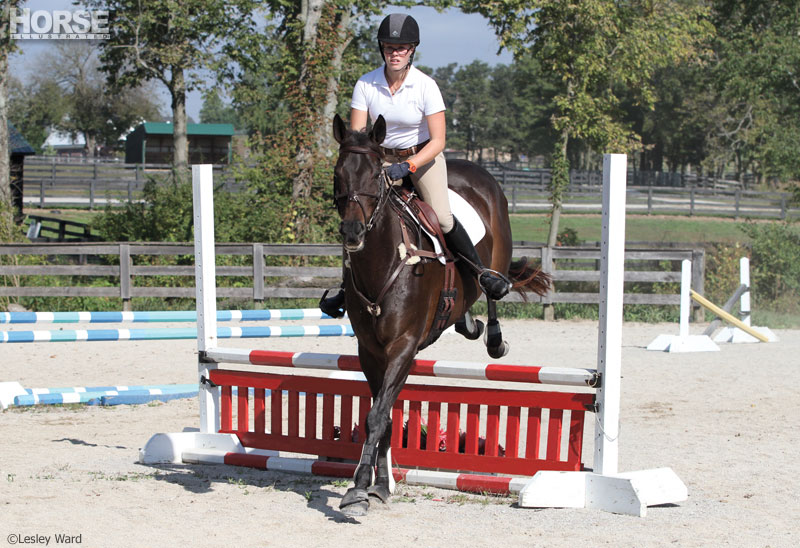
The Basics
According to Dutton, there are several important skills your horse will need to master in the arena before going cross-country. The first is to get your horse consistently thinking and going forward, or “in front of your leg.”
“In simple terms, your horse has to understand that he has to jump the jump,” says Dutton. “Not stop and then jump, or take a look first. It’s important to instill this in your training early.”
Getting your horse reliably in front of your leg means that when you put your leg on, he immediately responds. If your horse is on the lazy side, you may need to follow up your request with a tap of your crop behind your leg. Eventually, he will anticipate that he needs to move just as quickly from your leg alone. (Even if your horse is on the hotter end of the scale, it’s always a good idea to carry a small crop when jumping so that drifting and refusals can be quickly corrected.)
Once your horse is in front of your leg when jumping, the second skill he will need in order to balance that out is to understand the deep distance. “He must be comfortable and confident about coming to a jump and not rushing to the other side,” says Dutton. “He should be able to keep the same rhythm and wait for the jump.” If your horse is green, he recommends keeping the jumps very small and trotting over them.
The final requirement is an adjustable stride length. “On cross-country, you need the ability to approach a jump or a combination in a certain type of canter,” says Dutton. “A drop fence requires a different approach from a wide oxer or a wide ditch. Being able to produce any type of canter approach at any time is crucial. This can be practiced in the arena.”
This is where plenty of flatwork comes into play. Try collecting your horse’s canter on the short sides of the arena and lengthening it down the long sides. Test your work by setting two ground poles at a comfortable five gallop strides apart (generally 72 feet, but this can be adjusted for horses with bigger or smaller strides). See how many strides you can add between the poles; most horses can get up to eight strides with some practice. This will help you get the feeling of the bouncy, collected canter needed to approach technical cross-country combinations that are more common if you go up through the levels in eventing. Even at the lower levels, an adjustable stride is extremely useful in both cross-country and show jumping.
Cross-Country Exercises
With some simple items that you probably already have in the arena, you can set up some very effective exercises. It’s best to have a ground person for safety and to help set jumps. In addition to regular jump standards and poles, it’s helpful to have blocks or barrels to build corners and skinnies.
If you use blocks, make sure they are the lightweight type made for propping up cavallettis, as opposed to cinder blocks that don’t give way. Large plastic barrels can often be found at car washes after they have emptied out the soap.
“The main advantage of setting cross-country exercises in the arena is that you have the ability to adjust the exercise and set the course or lines as easy as you want,” says Dutton. Start as simply as possible and see how your horse responds before increasing the height or difficulty of the jumps.
Holding a line: Even at the lower levels, cross-country jumps frequently have short approaches that make it difficult to get square before takeoff. This requires holding a line and jumping the fence at an angle. “The arena is a great place to introduce this,” says Dutton. “Different angles and approaches to jumps will help give your horse confidence.”
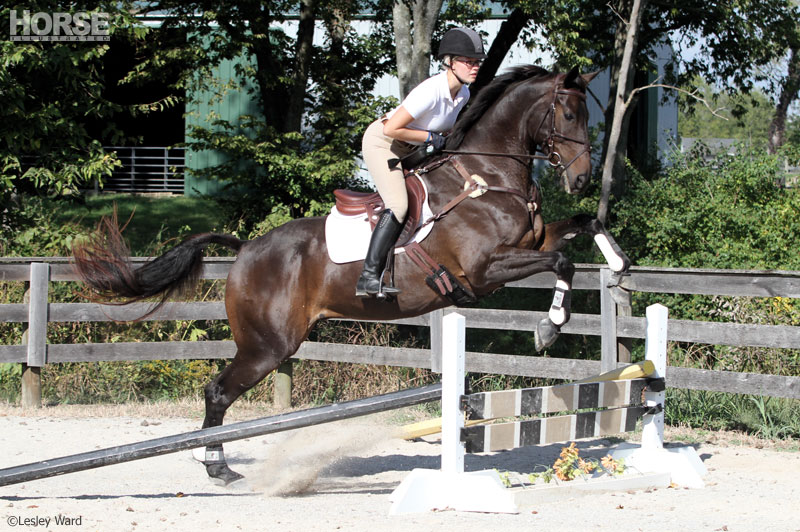
Narrow jumps: Another increasingly common question posed by cross-country course designers is the narrow jump, also called a “skinny.” This tests the training of the horse when it would be very easy to swerve either left or right around the jump, resulting in a costly run-out on course.
“Teaching your horse to stay honest and keep thinking forward when approaching a narrow jump is also better started in an arena,” says Dutton. “In the beginning, make it easier by using poles to help guide the horse.” These should be set as wings, with one end on the edge of the jump and the other end on the ground. You can eventually remove them once your horse is confidently jumping the exercise.
Corners: Although true 45-degree corner jumps (shaped like a slice of pie) aren’t seen until Preliminary level and up, introductory corner-type fences can be seen at Novice and Training level. The closer you jump to the narrow end, the more inviting it is for your horse to run out; however, if you jump too close to the wide end, your horse will have to jump a more taxing spread.
In the arena, a simple corner can be made by using two standards on one side and a short block or barrel laid on its side on the other end. Using two jump poles, place the ends in the cups of each standard, using a height of no more than 2’6″ and a width of 2 to 3 feet. On the other side, bring the poles together in a point on top of the block or barrel.
Jump a corner on the trajectory of the horizontal line in the letter “A”—not perpendicular to the takeoff face, as that will require jumping too much width, especially when corners become more extreme. Train both left-hand and right-hand corners so that your horse understands the exercise, particularly on the side that he’s more likely to run out. Use a jump pole as a “wing” to guide him if he is having trouble, particularly on his more difficult side.
After using these exercises in the arena this winter, you can begin schooling cross-country outdoors in the spring with more finely tuned skills for the job.
Meet the Trainer:
Phillip Dutton was a member of Australia’s gold medal-winning three-day eventing team at the 1996 Olympics in Atlanta. He has lived in the United States since 1991, and in 2006 he became an American citizen and began competing for the U.S. He represented the U.S. at the 2008 Bejiing Olympics and the 2010 Alltech FEI World Equestrian Games team in Lexington, Ky. Dutton is a 12-time holder of the United States Eventing Association Leading Rider of the Year title. In 2005, he was also the No. 1 FEI World Event Rider. Dutton and his wife, Evie, own, manage and train out of True Prospect Farm in West Grove, Pa., and at their Red Oak Farm in Aiken, S.C. www.phillipdutton.com
This article originally appeared in the December 2013 issue of Horse Illustrated. Click here to subscribe.

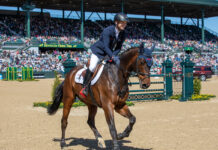
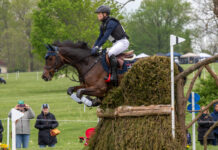
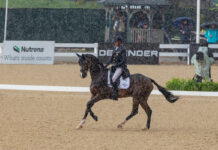


f
neat
Great tips.
Very good advise and ideas.
Great article!!
cool
Lots of good information…no great information.
col
f